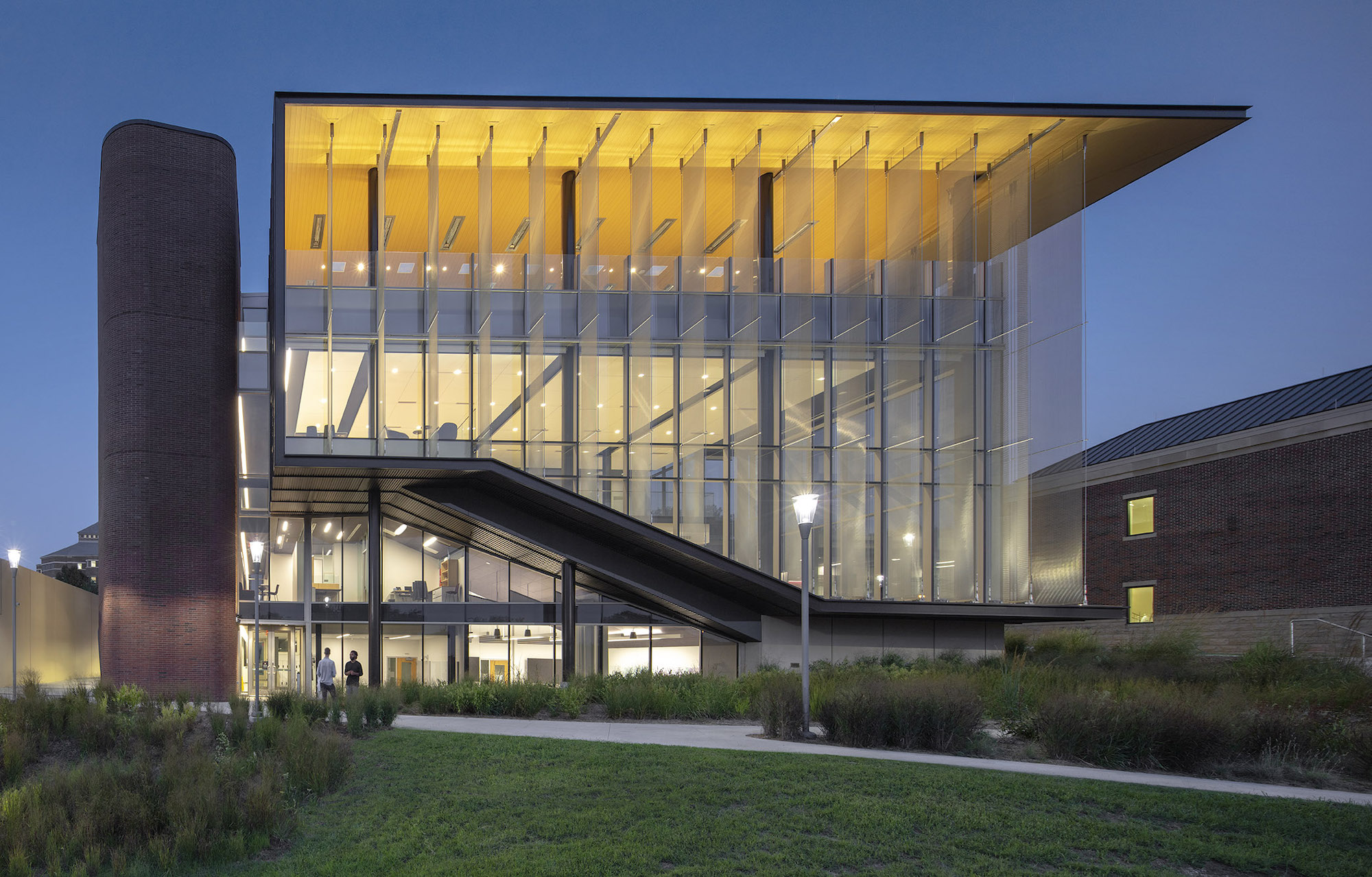The Center for Medical Education Innovation (CMEI) at Kansas City University was designed to adapt to changes in medical curriculum and pedagogy. The project program supported the mission of training leaders in osteopathic medicine with a state-of-the-art facility that leverages active-learning and simulation-based training.
The four-story, 56,000-sf medical education facility and an adjacent two-level free-standing parking structure were designed with key themes of transparency and multi functionality. The building consists of about 26,000 sf of assignable medical education space and an additional 9,500 sf of shelled classroom space.
The CMEI helps define a new campus entry and lower quad. The pavilion-like four-story building takes advantage of the site’s sloping topography while maintaining the scale of the existing campus by lowering one floor into the sloping site. This approach creates the illusion of a three-story structure on the campus quad.
Users are introduced to the building through the connective, multi-level, 3,000 sf lobby that doubles as a public forum to provide waiting, colloquia, study, and briefing functions. The raked, glazed two-story lobby and third-floor terrace appear to hover over the ground plane to offer a panoramic view of downtown Kansas City. The pavilion is wrapped with a single folding-plane gesture, which begins at the articulated lobby floor, bends upward to form the north wall, and crests to create a dramatically extended roof to help shade the south-facing glass elevation.
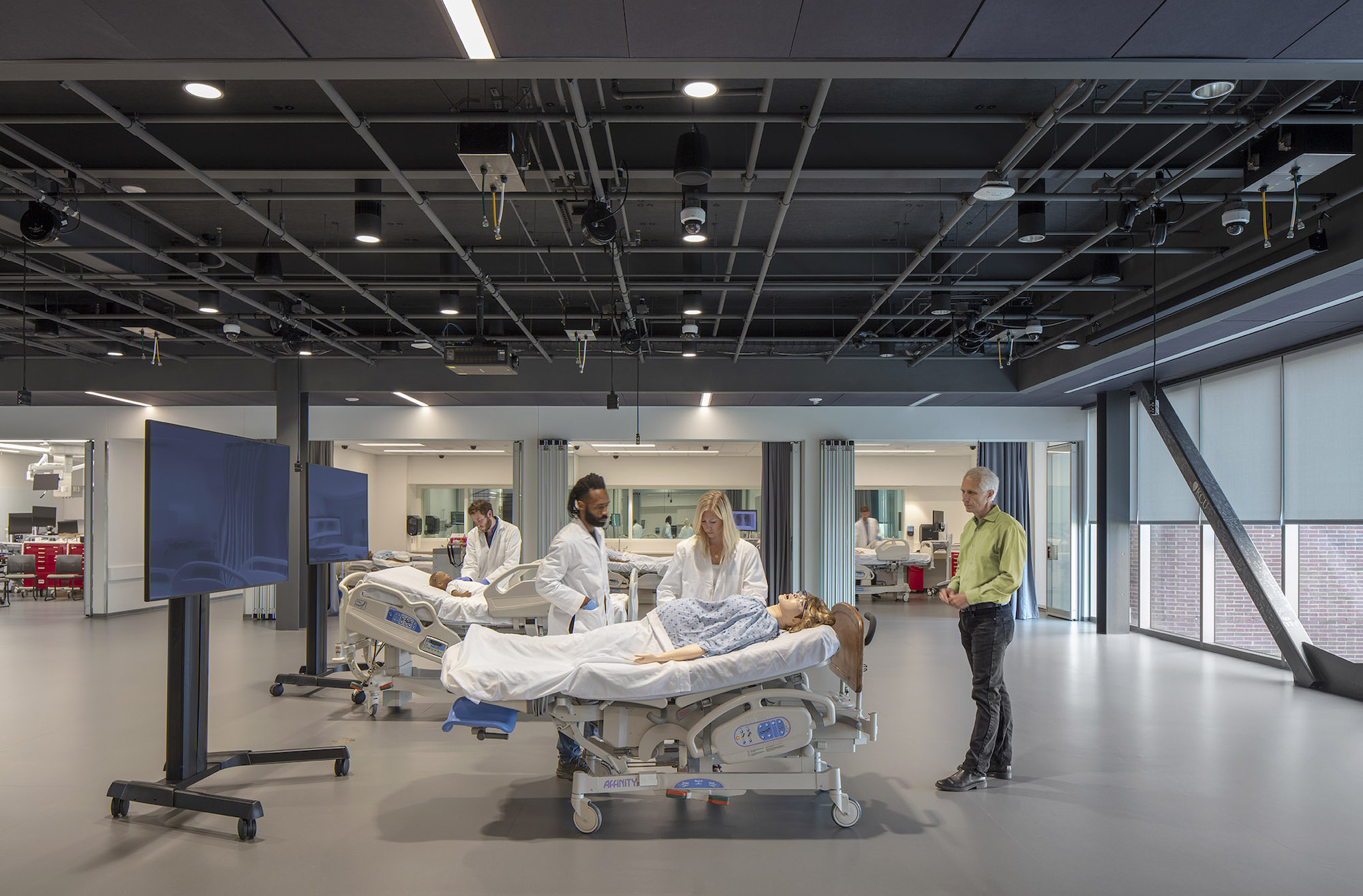
Transparency guided the articulation of the glass curtain wall to showcase the next-generation medical education environments within. The glazing defines the visually open facility, highlighting its learning activities during the day, and transforming into a subtle, illuminated beacon on campus at night. Evoking the heritage of the campus’ brick-clad buildings, the materials palette is rounded out with low-maintenance brick, metal panel, and precast concrete.
The building can adapt to changes in medical curriculum and pedagogy with a 2,800 sf simulation deck, clinical skills suite with 22 mock exam rooms, a 6,500 sf osteopathic manipulative medicine lab, and multi‐use forum that support multiple functions. The simulation suite houses an innovative and adaptable “black box” stage that can accommodate small-scale scenarios as well as large trauma events. The open ceiling utilizes a theater grid of steel tubes to supply air, vacuum, electricity, and data for simulation use, as well as hanging lights and simulation equipment that can be freely arranged throughout the space.
Situating the simulation suite at grade with its 40-foot opening to the exterior enables the space to expand onto the adjacent campus quad. Operable walls along exam rooms allow the standardized patient lounge to flex as a health assessment lab or serve as an after-hours student study space.
On the project team:
Owner and/or developer: Kansas City University of Medicine and Biosciences
Design architect: CO Architects
Architect of record: Helix Architecture + Design
MEP engineer (and lighting): Henderson Engineers
Structural (and civil) engineer: Walter P Moore
Acoustical, AV/IT Design: The Sextant Group (now NV5)
Landscape: Confluence
General contractor/construction manager: JE Dunn Construction
KCUMB Video from CO Architects on Vimeo.
A vision of the future of medical education buildings
Here is the design statement from architect CO Architects:
The Center for Medical Education Innovation (CMEI) project for Kansas City University of Medicine and Biosciences (KCU) in Kansas City, MO, is the first of a new generation of buildings at KCU aimed at fostering growth within the ever-evolving field of osteopathic medical education. Designed by CO Architects in collaboration with Helix Architecture + Design, the $33-million CMEI has an iconic design that bridges KCU’s history and traditions with its forward-looking role as a leader in osteopathic medicine.
Sited on approximately 4.5 acres of previously undeveloped green space on the west edge of campus, the CMEI helps define a new campus entry and Lower Quad. The pavilion-like four-story building takes advantage of the site’s sloping topography while maintaining the scale of the existing campus by lowering one floor into the sloping site, creating the illusion of a three-story structure on the campus quad.
Users are introduced to the building through the connective, multi-level, multi-functional, 3,000-square-foot lobby that doubles as a public forum to provide waiting, colloquia, study, and briefing functions. The raked, glazed two-story lobby and third-floor terrace appear to hover over the ground plane to offer a panoramic view of downtown Kansas City, thereby visually connecting the university with the city to emphasize KCU’s mission of improving the well-being of the larger community. The pavilion is wrapped with a single folding-plane gesture, which begins at the articulated lobby floor, bends upward to form the north wall, and then crests to create a dramatically extended roof to help shade the south-facing glass elevation.
Transparency is a key element of the design of the CMEI, guiding the articulation of the glass curtain wall to showcase the next-generation medical education environments within. The glazing defines the visually open facility, highlighting its learning activities during the day, and transforming into a subtle, illuminated beacon on campus at night. The building is a dramatic anchor to a future new campus entry. Evoking the heritage of the campus’ brick-clad buildings, the materials palette is rounded out with low-maintenance brick, metal panel, and precast concrete.
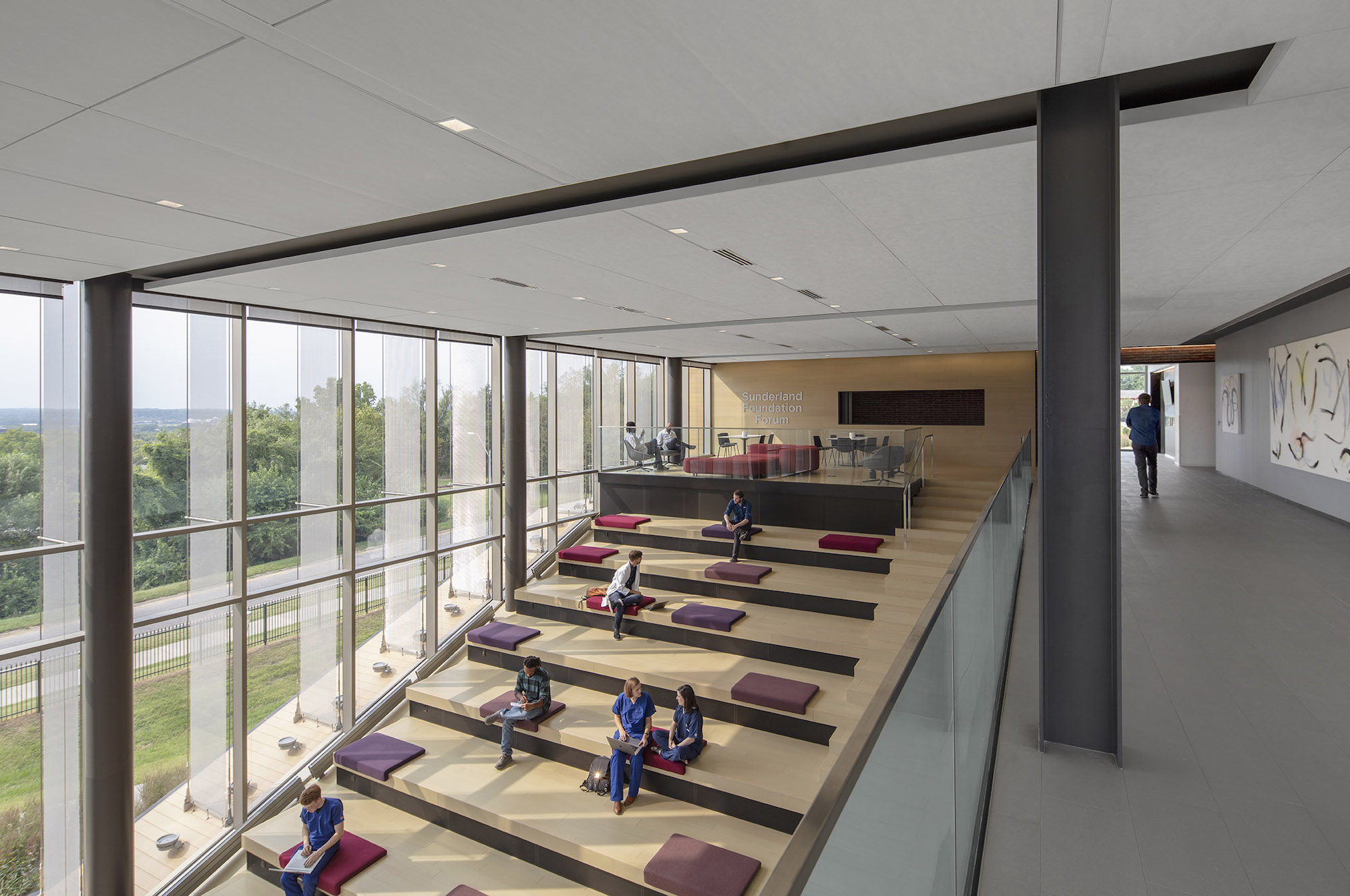
Paramount to the success of the project is the building’s ability to adapt to changes in medical curriculum and pedagogy, and for the programed spaces—a 2,800-square-foot simulation deck, clinical skills suite with 22 mock exam rooms, 6,500-square-foot osteopathic manipulative medicine lab, and multi‐use forum—to support multiple functions. The simulation suite houses an innovative and adaptable “black box” stage that can accommodate small-scale scenarios as well as large trauma events.
The open ceiling above utilizes a theater grid of steel tubes to supply air, vacuum, electricity, and data for simulation use, as well as hanging lights and simulation equipment that can be freely arranged throughout the space. Situating the simulation suite at grade with its 40-foot opening to the exterior enables the space to expand onto the adjacent campus quad. Operable walls along exam rooms allow the standardized patient lounge to flex as a health assessment lab, or serve as an after-hours student study space.
The design of the CMEI, which is LEED certified, addresses sustainability from multiple fronts. The building form was conceived to strengthen performance: It is oriented lengthwise in the east/west direction, so solar heat gain is easier to control on the longer north and south façades. The broad, 24-foot-deep cantilevered roof fully shades the south façade during the summer. Brick construction on the east façade blocks harsh early morning sunlight, and semi-transparent metal-mesh fins on the west side shade the glazing while maintaining the impressive views of the Kansas City skyline. The metal-mesh system, which features a horizontal pattern at 50% opacity, attaches to the building via ultra-thin cable rail, which allowed the design team to meet challenging wind-load requirements.
CMEI supports the University’s educational mission to train compassionate and competent leaders in osteopathic medicine by creating a state-of-the-art facility that leverages active-learning and simulation-based training. Through its sensitive yet bold architectural design—with the key themes of transparency and multi functionality—the building reflects both the University’s heritage and tradition as well as its vision for the future of medical education and community engagement.
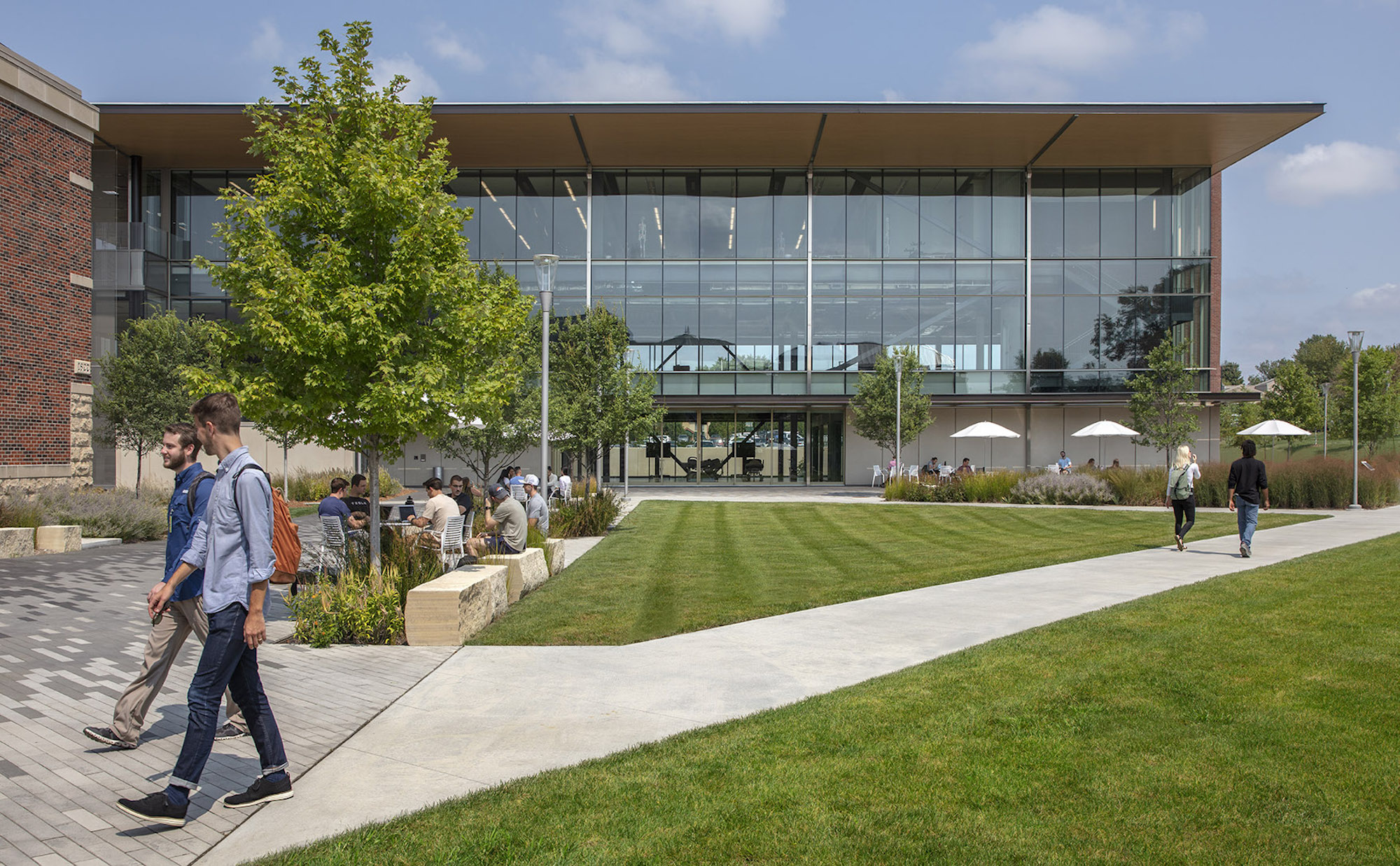
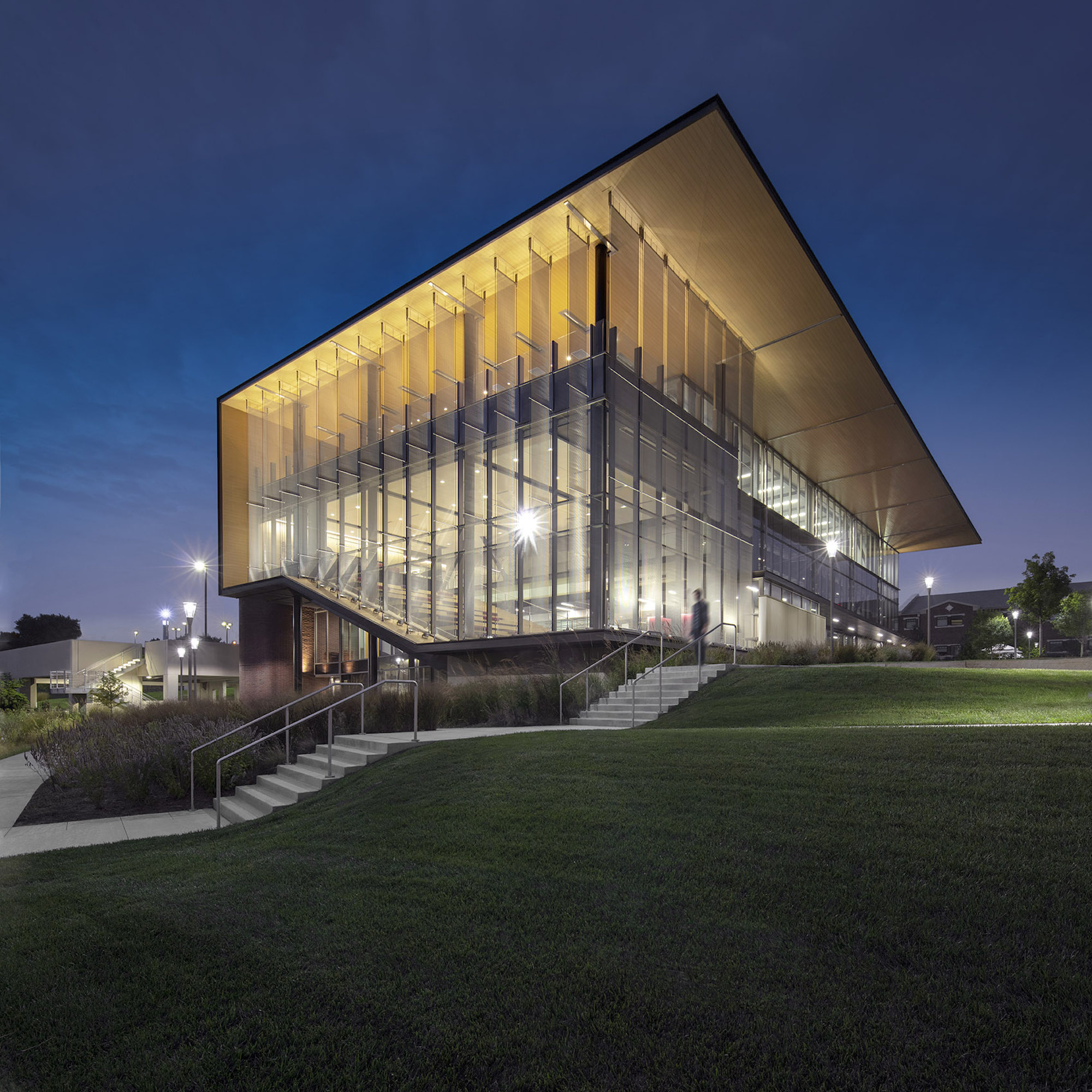
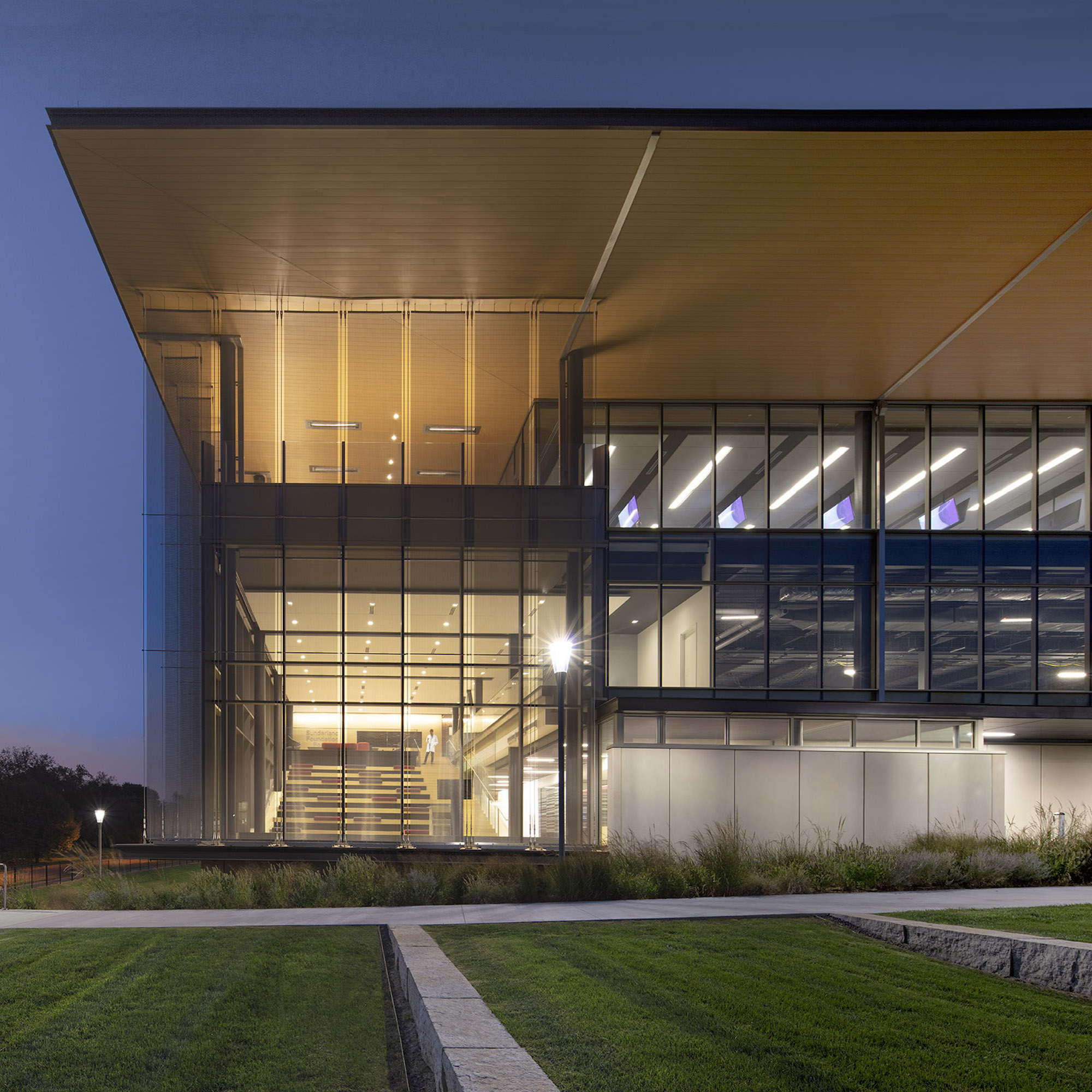
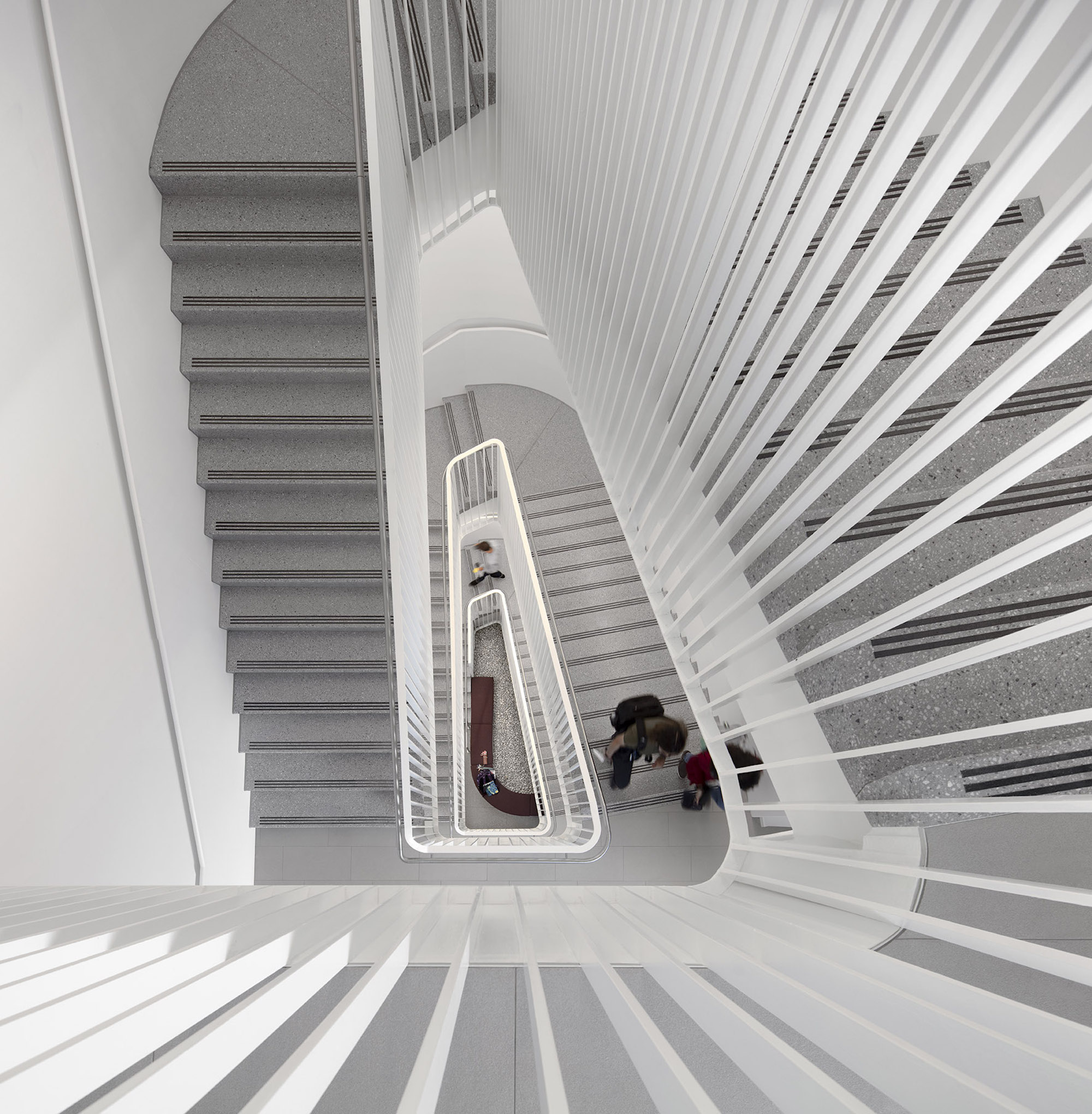
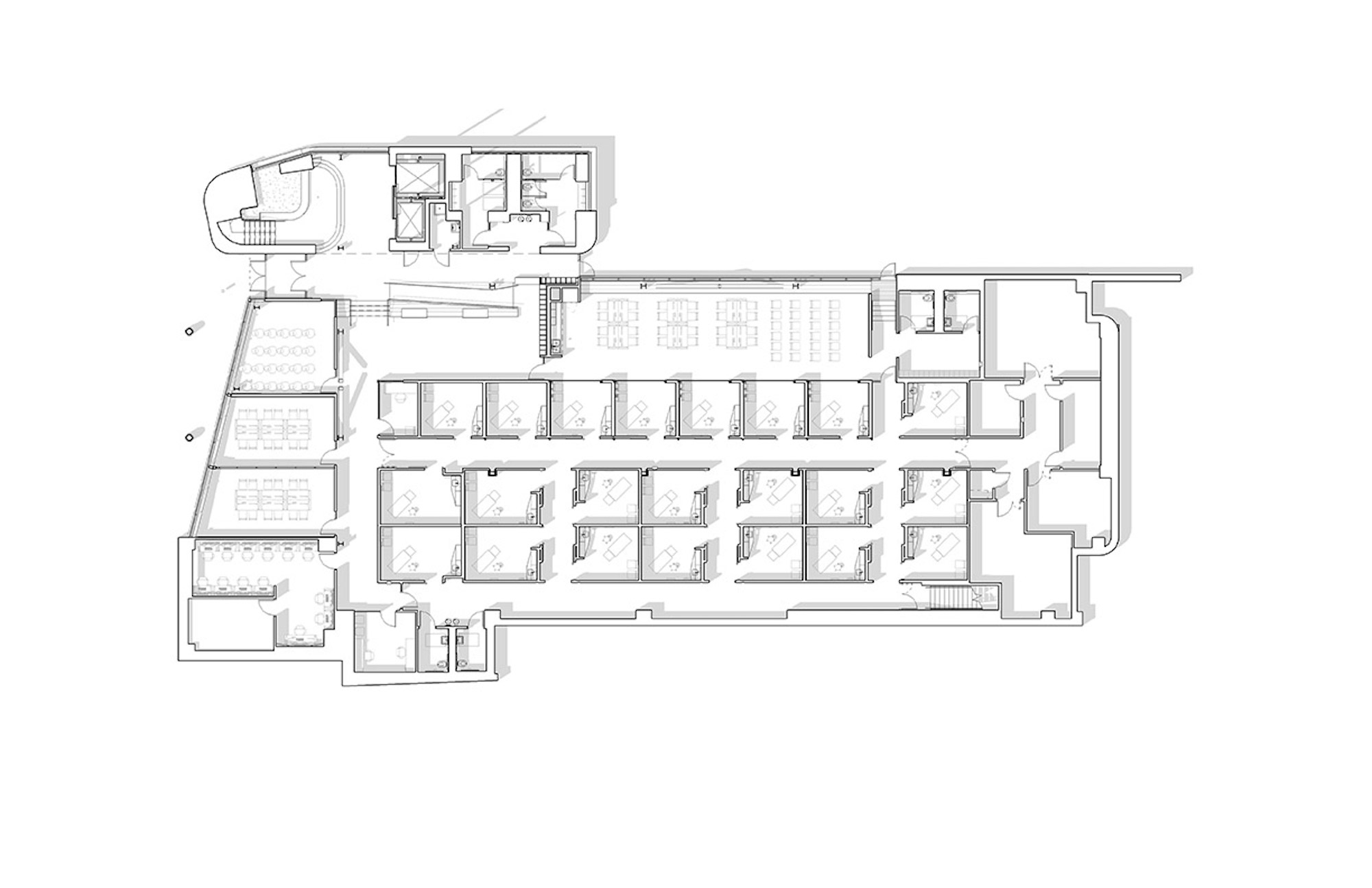
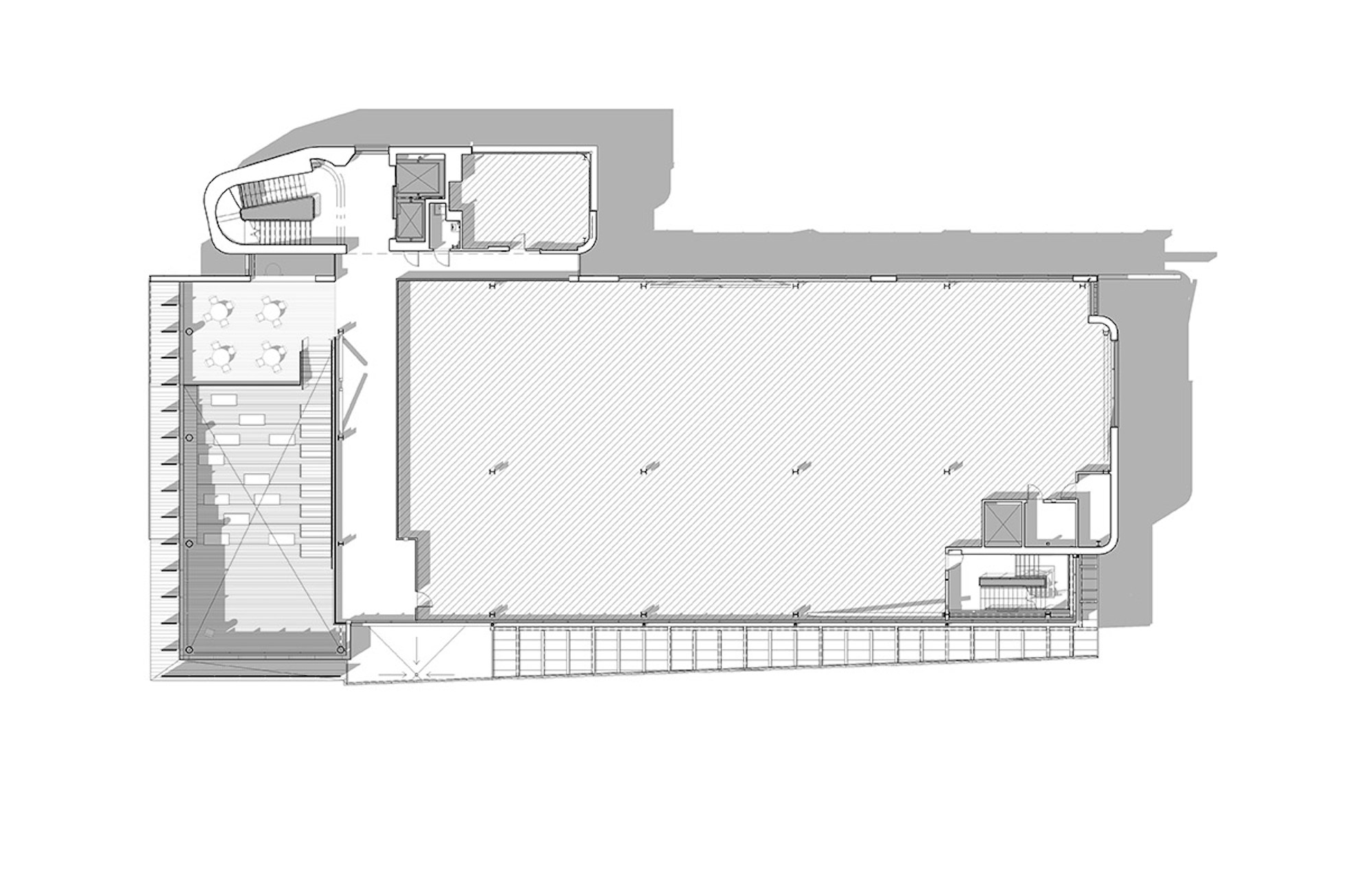
Related Stories
| Mar 11, 2011
Slam dunk for the University of Nebraska’s basketball arena
The University of Nebraska men’s and women’s basketball programs will have a new home beginning in 2013. Designed by the DLR Group, the $344 million West Haymarket Civic Arena in Lincoln, Neb., will have 16,000 seats, suites, club amenities, loge, dedicated locker rooms, training rooms, and support space for game operations.
| Feb 23, 2011
The library is dead, long live the library
The Society for College and University Planning asked its members to voice their thoughts on the possible death of academic libraries. And many did. The good news? It's not all bad news. A summary of their members' comments appears on the SCUP blog.
| Feb 11, 2011
Sustainable features on the bill for dual-building performing arts center at Soka University of America
The $73 million Soka University of America’s new performing arts center and academic complex recently opened on the school’s Aliso Viejo, Calif., campus. McCarthy Building Companies and Zimmer Gunsul Frasca Architects collaborated on the two-building project. One is a three-story, 47,836-sf facility with a grand reception lobby, a 1,200-seat auditorium, and supports spaces. The other is a four-story, 48,974-sf facility with 11 classrooms, 29 faculty offices, a 150-seat black box theater, rehearsal/dance studio, and support spaces. The project, which has a green roof, solar panels, operable windows, and sun-shading devices, is going for LEED Silver.
| Feb 11, 2011
Research facility separates but also connects lab spaces
California State University, Northridge, consolidated its graduate and undergraduate biology and mathematics programs into one 90,000-sf research facility. Architect of record Cannon Design worked on the new Chaparral Hall, creating a four-story facility with two distinct spaces that separate research and teaching areas; these are linked by faculty offices to create collaborative spaces. The building houses wet research, teaching, and computational research labs, a 5,000-sf vivarium, classrooms, and administrative offices. A four-story outdoor lobby and plaza and an outdoor staircase provide orientation. A covered walkway links the new facility with the existing science complex. Saiful/Bouquet served as structural engineer, Bard, Rao + Athanas Consulting Engineers served as MEP, and Research Facilities Design was laboratory consultant.
| Feb 11, 2011
A feast of dining options at University of Colorado community center, but hold the buffalo stew
The University of Colorado, Boulder, cooked up something different with its new $84.4 million Center for Community building, whose 900-seat foodservice area consists of 12 micro-restaurants, each with its own food options and décor. Centerbrook Architects of Connecticut collaborated with Denver’s Davis Partnership Architects and foodservice designer Baker Group of Grand Rapids, Mich., on the 323,000-sf facility, which also includes space for a career center, international education, and counseling and psychological services. Exterior walls of rough-hewn, variegated sandstone and a terra cotta roof help the new facility blend with existing campus buildings. Target: LEED Gold.
| Feb 11, 2011
Chicago high-rise mixes condos with classrooms for Art Institute students
The Legacy at Millennium Park is a 72-story, mixed-use complex that rises high above Chicago’s Michigan Avenue. The glass tower, designed by Solomon Cordwell Buenz, is mostly residential, but also includes 41,000 sf of classroom space for the School of the Art Institute of Chicago and another 7,400 sf of retail space. The building’s 355 one-, two-, three-, and four-bedroom condominiums range from 875 sf to 9,300 sf, and there are seven levels of parking. Sky patios on the 15th, 42nd, and 60th floors give owners outdoor access and views of Lake Michigan.
| Feb 11, 2011
Apartment complex caters to University of Minnesota students
Twin Cities firm Elness Swenson Graham Architects designed the new Stadium Village Flats, in the University of Minnesota’s East Bank Campus, with students in mind. The $30 million, six-story residential/retail complex will include 120 furnished apartments with fitness rooms and lounges on each floor. More than 5,000 sf of first-floor retail space and two levels of below-ground parking will complete the complex. Opus AE Group Inc., based in Minneapolis, will provide structural engineering services.
| Feb 11, 2011
Four-story library at Salem State will hold half a million—get this—books!
Salem State University in Massachusetts broke ground on a new library and learning center in December. The new four-story library will include instructional labs, group study rooms, and a testing center. The modern, 124,000-sf design by Boston-based Shepley Bulfinch includes space for 500,000 books and study space for up to a thousand students. Sustainable features include geothermal heating and cooling, rainwater harvesting, and low-flow plumbing fixtures.
| Jan 21, 2011
Primate research facility at Duke improves life for lemurs
Dozens of lemurs have new homes in two new facilities at the Duke Lemur Center in Raleigh, N.C. The Releasable Building connects to a 69-acre fenced forest for free-ranging lemurs, while the Semi-Releasable Building is for lemurs with limited-range privileges.


